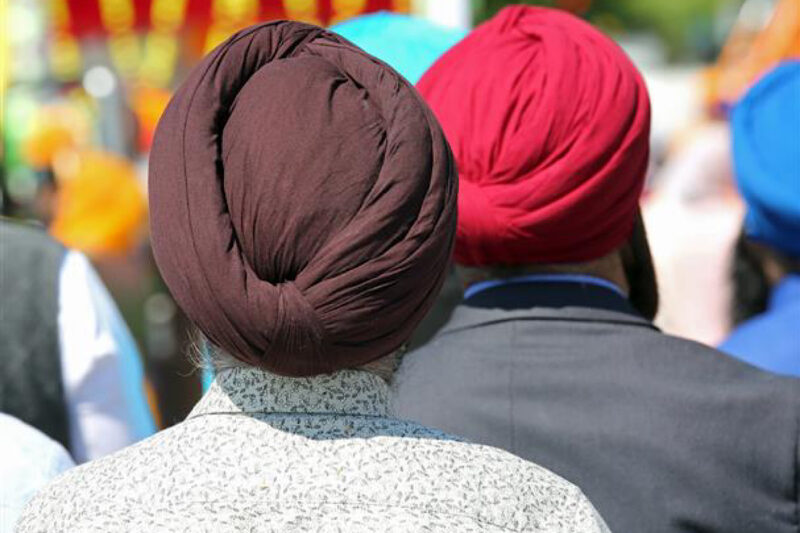 For decades, critics have argued that the Rashtriya Swayamsevak Sangh (RSS) has pursued a systematic project to fold Sikh identity into a broader “Hindu” framework. They see this not as an attempt at harmony but as a deliberate erosion of Sikh sovereignty and uniqueness. The foundation of this claim lies in the writings of Hindutva ideologues, repeated statements by RSS leaders, the activities of affiliated organizations, and the consistent resistance voiced by Sikh institutions such as the Akal Takht and the Shiromani Gurdwara Parbandhak Committee (SGPC).
For decades, critics have argued that the Rashtriya Swayamsevak Sangh (RSS) has pursued a systematic project to fold Sikh identity into a broader “Hindu” framework. They see this not as an attempt at harmony but as a deliberate erosion of Sikh sovereignty and uniqueness. The foundation of this claim lies in the writings of Hindutva ideologues, repeated statements by RSS leaders, the activities of affiliated organizations, and the consistent resistance voiced by Sikh institutions such as the Akal Takht and the Shiromani Gurdwara Parbandhak Committee (SGPC).
The intellectual roots of this assimilationist approach can be traced to Vinayak Damodar Savarkar’s seminal text Hindutva: Who is a Hindu?. In this tract, Savarkar wrote that “Sikhs should be classed as Sikhs religiously, but as Hindus racially and culturally.” This definition attempts to preserve only the outward distinctiveness of Sikh religious practice while stripping away its independent identity, reducing Sikhs to a branch of Hindu nationality. Later Hindutva writers echoed this view, with one polemical line declaring, “There is enough of a prima facie case that Sikhism is a Hindu sect pure and simple.” Such arguments seek to redefine Sikhism not as a revealed religion with its own scripture, discipline, and theology, but as an extension of a larger Hindu civilization.
Contemporary RSS leaders have continued to reinforce this notion. Current RSS chief Mohan Bhagwat has repeatedly asserted that “all people living in India are Hindus,” while also describing India as a “Hindu Rashtra.” To Sikh leaders, such statements amount to a denial of their distinct religious identity. The SGPC president was quick to rebut Bhagwat’s claim in 2023, stating firmly that “not all people living in India are Hindus.” This exchange highlights the irreconcilable difference between the RSS vision of civilizational unity and the Sikh assertion of sovereignty.
The ideological stance is not limited to texts and speeches; it also manifests in organizational outreach. The Rashtriya Sikh Sangat, an affiliate of the RSS, was established to promote “unity” between Hindus and Sikhs. However, Sikh religious authorities have viewed this as a dangerous Trojan horse. In 2004, the Akal Takht issued a directive warning Sikhs to avoid the RSS and its Sikh wing, and subsequent hukamnamas have reiterated the call to boycott events organized by Rashtriya Sikh Sangat. These responses underscore the gravity with which Sikh institutions perceive the RSS project: not as dialogue, but as an existential threat to Sikh identity.
Narratives promoted by Hindutva thinkers also reframe Sikh history in ways that further this project. Sikhs are often described as defenders of Hindu dharma, cast as protectors of a larger Hindu civilization rather than as followers of an autonomous faith. By placing Sikh contributions within a Hindu frame, these narratives subtly but effectively diminish the originality and sovereignty of the Sikh tradition. Critics argue that such rhetoric is not merely rhetorical but designed to naturalize the idea that Sikhs are simply a sect within Hinduism.
Against this backdrop, Sikh authorities have consistently reaffirmed their distinctiveness. The SGPC has declared that “Sikhs are sui generis, a distinct entity; their identity and culture are completely original.” This assertion directly challenges the RSS’s claim that Sikhism is a subset of Hinduism and insists on recognition of Sikhism’s independent scriptural foundation, spiritual discipline, and historical evolution.
The RSS, for its part, defends its approach as cultural unity rather than religious assimilation. Its leaders argue that “Hindutva” is not a narrow religious creed but a civilizational ethos that encompasses diverse faiths and traditions under a common national identity. They point to social service work and outreach to Sikh leaders as evidence of goodwill. Yet for Sikh institutions and many scholars, the problem lies precisely in this framing: by defining national identity as “Hindu,” the RSS negates Sikh sovereignty by default.
In the end, the tension between the RSS and Sikh institutions is structural rather than episodic. It surfaces whenever questions of national identity are framed in terms that deny Sikhism’s independent status. For critics, the RSS project represents nothing less than an attempt to erase Sikhism as a distinct faith and absorb it into a monolithic Hindu order. For the RSS, the vision is one of unity under Hindutva. These two positions remain fundamentally at odds, and their collision continues to shape debates on religion, identity, and power in contemporary India.